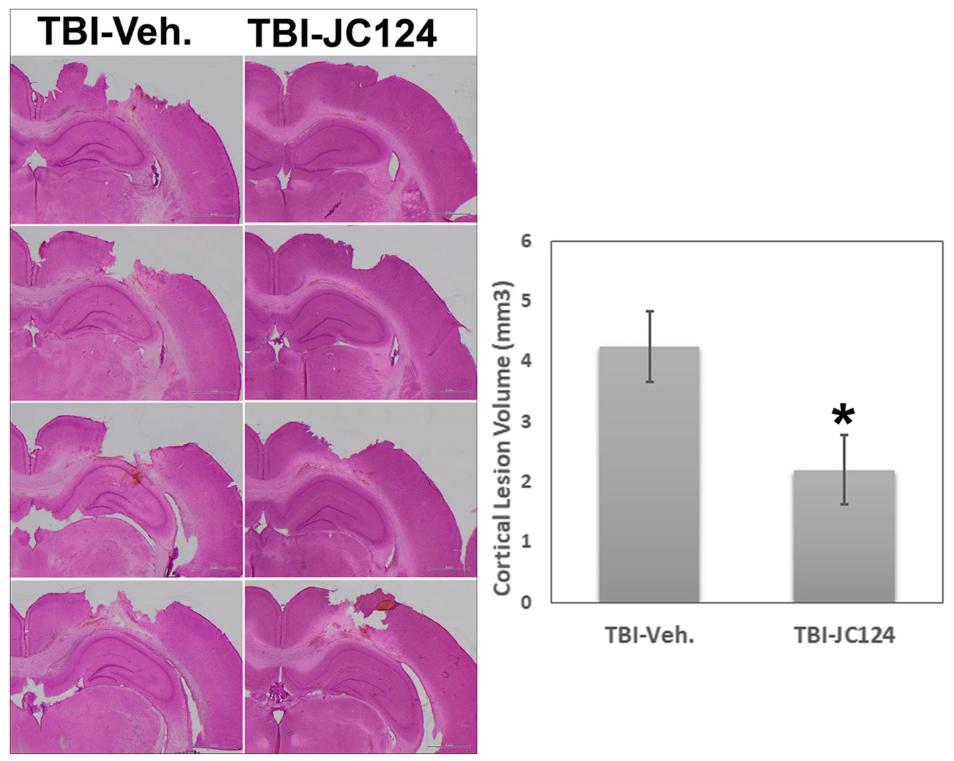- You are here: Home
- Disease Models
- Neurological Disease Models
- Traumatic Brain Injury (TBI) Model
- Controlled Cortical Impact Injury (CCI) Model
Disease Models
- Oncology Models
-
Inflammation & Autoimmune Disease Models
- Rheumatoid Arthritis Models
- Glomerulonephritis Models
- Multiple Sclerosis (MS) Models
- Ocular Inflammation Models
- Sjögren's Syndrome Model
- LPS-induced Acute Lung Injury Model
- Peritonitis Models
- Passive Cutaneous Anaphylaxis Model
- Delayed-Type Hypersensitivity (DTH) Models
- Inflammatory Bowel Disease Models
- Systemic Lupus Erythematosus Animal Models
- Asthma Model
- Sepsis Model
- Psoriasis Model
- Atopic Dermatitis (AD) Model
- Scleroderma Model
- Gouty Arthritis Model
- Carrageenan-Induced Air Pouch Synovitis Model
- Carrageenan-Induced Paw Edema Model
- Experimental Autoimmune Myasthenia Gravis (EAMG) Model
-
Cardiovascular Disease Models
- Surgical Models
- Animal Models of Hypertension
- Venous Thrombosis Model
- Atherosclerosis model
- Cardiac Arrhythmia Model
- Hyperlipoidemia Model
- Doxorubicin-induced Heart Failure Model
- Isoproterenol-induced Heart Failure Model
- Arterial Thrombosis Model
- Pulmonary Arterial Hypertension (PAH) Models
- Heart Failure with Preserved Ejection Fraction (HFpEF) Model
-
Neurological Disease Models
- Alzheimer's Disease Modeling and Assays
- Seizure Models
- Parkinson's Disease Models
- Ischemic Stroke Models
- Acute Spinal Cord Injury (ASCI) Model
- Traumatic Brain Injury (TBI) Model
- Hypoxic-Ischemic Encephalopathy (HIE) Model
- Tourette Syndrome (TS) Model
- Amyotrophic Lateral Sclerosis (ALS) Model
- Huntington's Disease (HD) Model
- Intracerebral hemorrhage (ICH) Models
- Pain Models
- Metabolic Disease Models
- Liver Disease Models
- Rare Disease Models
- Respiratory Disease Models
- Digestive Disease Models
-
Urology Disease Models
- Cisplatin-induced Nephrotoxicity Model
- Unilateral Ureteral Obstruction Model
- 5/6 Nephrectomy Model
- Renal Ischemia-Reperfusion Injury (RIRI) Model
- Diabetic Nephropathy (DN) Models
- Passive Heymann Nephritis (PHN) Model
- Adenine-Induced Chronic Kidney Disease (CKD) Model
- Kidney Stone Model
- Doxorubicin-Induced Nephropathy Model
- Orthopedic Disease Models
- Ocular Disease Models
- Skin Disease Models
- Infectious Disease Models
Controlled Cortical Impact Injury (CCI) Model
If you are looking for reliable and accurate data on traumatic brain injury (TBI) about your compounds, you may be interested to know that Creative Bioarray has established and validated a model of TBI using the Controlled Cortical Impact Injury (CCI) Model. This widely recognized model is the most commonly used approach to simulate TBI in preclinical research. At Creative Bioarray, we conduct contract research using this model to help you get the most out of your studies. Our team of experts is dedicated to providing you with high-quality data so that you can advance your research with confidence.
TBI is a significant public health concern that requires further research efforts. To better understand TBI and concussion, animal models have been utilized, with CCI being a well-characterized and widely used experimental model for three decades. One of the key strengths of the CCI model is its scalability to several laboratory animals, enabling researchers to produce graded TBI ranging from mild to severe. This model has been employed in various studies, including the investigation of open and closed-head TBI, repeated injuries, and the long-term deficits associated with TBI and concussion.
 Fig. 1 Controlled cortical impact (CCI) injury model in mice
Fig. 1 Controlled cortical impact (CCI) injury model in mice
Our Controlled Cortical Impact Injury (CCI) Model
- Modeling Method
At Creative Bioarray, the CCI model is established by a precision percussion device. - Available Animal
- Rat
- Mouse
- Group Setting
- Sham group
- Model group
- Three dose groups of the test compound
- Endpoints
- Body weight
- Histology analysis: H&E staining,
- Behavioral tests: Rotarod test, Morris water maze test, etc.
- Clinical score: Glasgow coma scale (GCS) score
- Brain water content
- qPCR and Western Blot
- Other customized endpoints: available upon request
……
Example Data
 Fig. 2 JC124 treatment reduced the cortical tissue damage following CCI.
Fig. 2 JC124 treatment reduced the cortical tissue damage following CCI.
 Fig. 3 The mNSS score of implanted TBI mice in each group.
Fig. 3 The mNSS score of implanted TBI mice in each group.
Additionally, we provide other TBI rodent models that you may be interested in:
Quotation and Ordering
With years of scientific expertise and state-of-the-art facilities, Creative Bioarray provides our clients with exceptional services. Our team of experts is always ready to assist clients in designing study plans and protocols tailored to their specific needs. If you are interested in our service, please do not hesitate to contact us or submit an inquiry to us directly. We look forward to cooperating with you.
References
- Guo, D., et al. Rapamycin attenuates the development of posttraumatic epilepsy in a mouse model of traumatic brain injury. PloS one, 2013, 8(5): e64078.
- Kuwar, R., Rolfe, A., et al. A novel small molecular NLRP3 inflammasome inhibitor alleviates neuroinflammatory response following traumatic brain injury. J Neuroinflammation, 2019, 11;16(1):81.
- Wang, L., Zhang, D., et al. Injectable hyaluronic acid hydrogel loaded with BMSC and NGF for traumatic brain injury treatment. Materials Today Bio, 2022, 13: 100201.
- Lu, D., Wang, Y., et al. Armcx1 attenuates secondary brain injury in an experimental traumatic brain injury model in male mice by alleviating mitochondrial dysfunction and neuronal cell death. Neurobiology of Disease, 2023, 184: 106228.
For research use only. Not for any other purpose.

